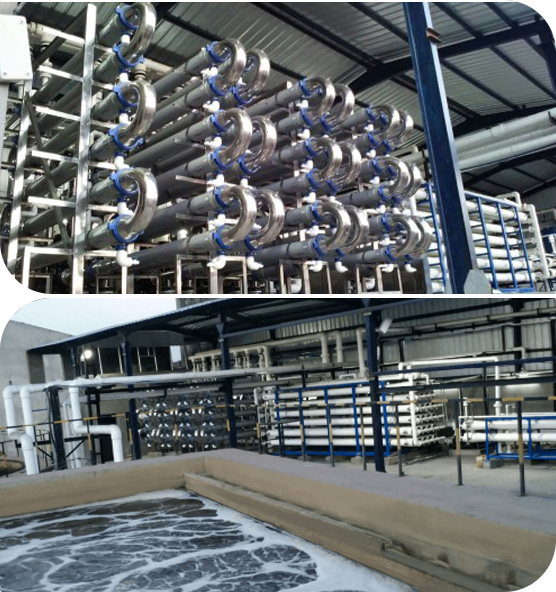
Waterman Engineers Australia is one of the foremost suppliers of Zero Liquid Discharge procedure. A ZLD system is a treatment process which is utilised to eliminate every one of the liquid squander from a system. The aim of ZLD drinking water procedure is to scale back wastewater economically and make potable drinking water which is healthy for typical use. Zero discharge system is a sophisticated procedure method that comprises ultrafiltration, reverse osmosis, evaporation and fractional electro deionization. And we are a properly-known provider of ZLD methods.
In several Industries, like ability, oil & gasoline, chemical compounds, mining and Other folks, a large amount of wastewater is created that has to be managed. Conventionally, this discharge of wastewater is done by means of a plant outfall to your area h2o human body like an evaporation pond, or in some cases deep very well injected. These tactics cause many environmental problems by the public in lots of areas of the earth, as water can be a scarce supply and its management really should be monitored. These worries have resulted inside the institution of ZLD procedures by several industries to lessen their environmental footprint and improve sustainability. And, Waterman Engineers Australia are very best ZLD suppliers yow will discover for this system.
Homes OF ZERO LIQUID DISCHARGE Process
The properties of the Zero Liquid Discharge system may vary based on the specific design and technological know-how applied. Nonetheless, some prevalent Homes of ZLD programs contain:
Drinking water Conservation: One among the main targets of ZLD devices is always to conserve water by minimizing the discharge of liquid waste to the surroundings.
High Water Purity: ZLD units are intended to produce substantial-excellent h2o that is free from impurities and contaminants, that makes them appropriate for use in several industrial procedures.
Versatility: ZLD devices are sometimes made to accommodate a wide range of input liquid streams, which makes them functional and suitable for use in different industries.
Innovative Wastewater Treatment method: Zero liquid discharge methods use advanced wastewater procedure techniques to remove impurities and contaminants from your effluent, producing substantial-quality water.
Waste Reduction: ZLD techniques assistance decrease squander by cutting down the quantity of liquid squander that should be disposed of and by developing a concentrated, solid squander substance which can be securely disposed of.
Vitality Efficiency: ZLD programs might be Electrical power-intensive due to superior Power demands of evaporation and other wastewater treatment method procedures. Nevertheless, developments in engineering are earning Zero liquid discharge units more Power-efficient and price-powerful.
Waterman Engineers Australia manufactures Zero Liquid Discharge (ZLD) programs built to clear away all liquid squander, aiming to supply potable water and reduce environmental impact. Their ZLD systems typically involve ultrafiltration, reverse osmosis, evaporation, and fractional electro deionization. Vital technologies utilized are Slipping Movie Brine Concentrators, Forced Circulation Crystallizer, and others, that has a two-phase process of pre-focus and evaporation/crystallization to Recuperate and reuse h2o. These programs are adaptable to distinct industries, emphasizing h2o conservation, substantial water purity, squander reduction, and Power performance. Specialized technical specs are different and customizable, contemplating components like water supply, flow amount, and feed water good quality.
The necessity for Zero Liquid Discharge (ZLD) techniques occurs in the necessity to deal with environmental issues relevant to water scarcity and pollution. In industries like electric power, oil & gas, and mining, large quantities of wastewater are created. Historically, this wastewater is discharged into bodies of drinking water, producing air pollution and depleting thoroughly clean drinking water methods. ZLD systems goal to reduce these impacts by dealing with and recycling wastewater within just the commercial system, thereby conserving drinking water, minimizing waste, and endorsing sustainability.
When contemplating the technological requirements of the Zero Liquid Discharge (ZLD) process, crucial elements to deal with include things like the water source it will eventually take care of, the process's move amount, the standard of feed water, the levels of remedy involved, the Restoration charge of water, methods for focus disposal, resources of building, functioning problems, and system automation and Management. These elements ensure the technique's success, durability, and efficiency in dealing with and recycling industrial wastewater.
Zero Liquid Discharge (ZLD) plants give Advantages for instance drinking water conservation, squander reduction, and pollution prevention, contributing to environmental sustainability. They are relevant in industries like electrical power technology, oil and fuel, chemicals, and mining, wherever they help Zld System Manufacturer Zero Liquid Discharge System in managing industrial wastewater proficiently, cutting down the ecological footprint, and complying with rigorous environmental regulations. These techniques are very important in spots facing water scarcity and for industries aiming to improve their sustainability and operational performance.
FAQs for just a Zero Liquid Discharge (ZLD) program generally tackle its operational concepts, Price tag-performance, servicing prerequisites, environmental impact, applicability across numerous industries, and regulatory compliance. These queries support buyers understand the procedure's Gains, complex requires, and suitability for his or her distinct wastewater administration desires.
one. Zero Liquid Discharge (ZLD) is often a wastewater remedy method created to eliminate all liquid squander.
two. The technique's elements are affected by the specific industrial process, wastewater composition, and regulatory demands.
3. Effluent remedy crops get rid of pollutants from textile effluents to stop environmental contamination.
four. Positive aspects include water conservation, pollution reduction, and regulatory compliance.
5. The purpose is to attenuate environmental affect by recycling drinking water and decreasing waste.
six-9. Effluent treatment method crops are phases in wastewater procedure: Main (physical separation), secondary (Organic cure), and tertiary (Sophisticated treatment).
ten. Unit operations contain filtration, sedimentation, Organic treatment method, and disinfection.
11. Limiting parameters are factors that affect the therapy's efficiency, like pH and contaminant concentration.
12. Design criteria include stream charge, effluent composition, and sought after quality of handled drinking water.